
From A-Z: an Alphabetarium of Resistance
by Andrea Luka Zimmerman
- View Andrea Luka Zimmerman's Biography
Andrea Luka Zimmerman is a Jarman Award-winning artist, filmmaker and cultural activist whose multi-layered practice calls for a profound reimagining of the relationship between people, place and ecology.
From A-Z: an Alphabetarium of Resistance
Andrea Luka Zimmerman
To map a place is to reveal and simultaneously undo. Some maps seek clarity and borders, perceptions of common understanding, counteracting thresholds and 'non-spaces'. Maps are the prerequisite for bordering forms of geopolitics and increasingly activate technologies of surveillance. Maps attune one to a particular way of knowing that reinforces what is valued as knowledge, what is deemed knowable, usually for the extraction of goods or accessibility, such as for tourism and against vernacular forms of memory. To find the unknown within structures of the known requires time. To make one's own memory in a place, spatially and otherwise disoriented upon arriving: when you get lost, you will start to know it.
Here I map the initials of my name, from A to Z and in-between.
I arrived in London in 1991, with poor English and, constantly having to move – 13 times in the first five years – I quickly got to know the city, and many connecting back streets (in both place and structural terms). Right from the moment I arrived, people would call me AZ. The A-Z, in pre-digital times, first published in the 1930s, was 'the' street map to London. I received many A-Z keyrings.
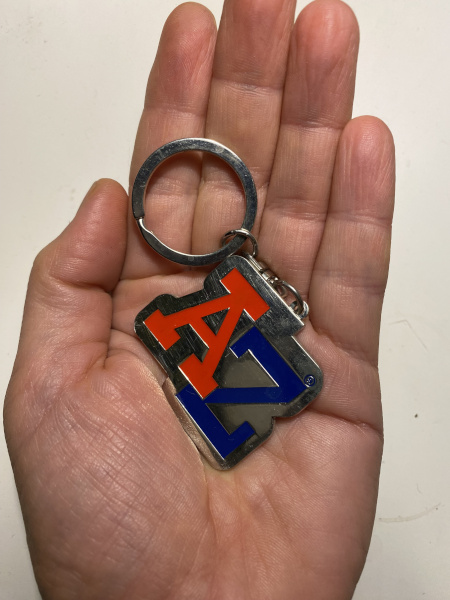
My last A-Z holds spectres of London now re-drawn so unrecognisably that, as far as I can see from my window, there is no building older than this millennium. Those that do not fit into these newly drawn maps, be they the less wealthy or the economically disadvantaged (these are not the same), the dis/abled, drifters, elderly, non-citizens, animals, plants and other creatures alive or hybrid – anyone who lives a life that is not deemed worthy of a place in the mapping of the 'new' worlds, which are – of course – 'secure by design'; are narrativised as marginal.
Finding oneself in the 'no more' places leads to another kind of mapping, quotidian and troubled, containing slippages, displacements, in/voluntary and enforced exits, repeated evictions, refusal, resistance, expulsions, and always and still those desires, a coming together, senses of belonging, and the worked-for futures of knowing: in short, the necessary processes of considering "to whom and what are we of consequence" (Diaz, 2022)1.
Towards a shared life, without "the want to own, govern, administrate the Other." (Morrison, 1998)
A
Art Class
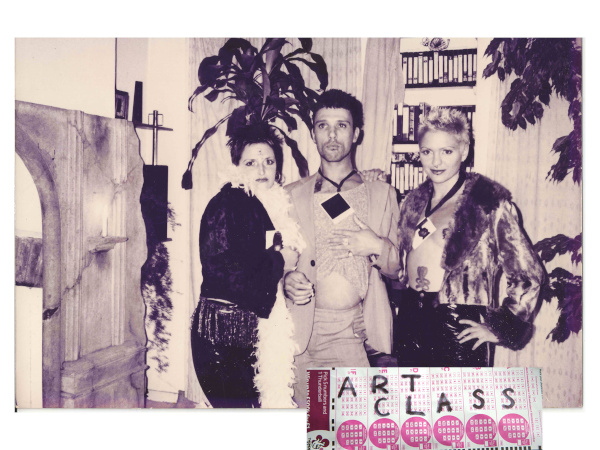
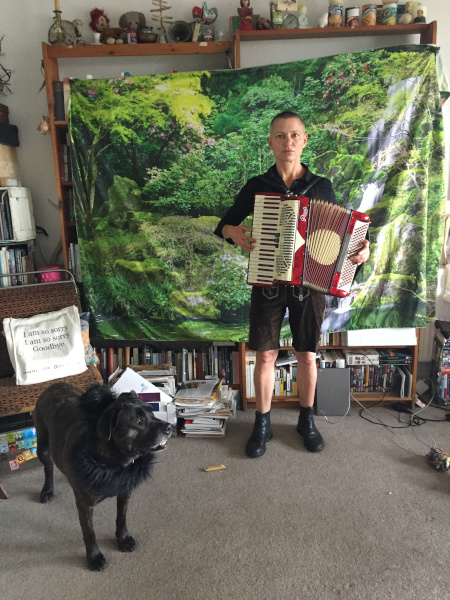
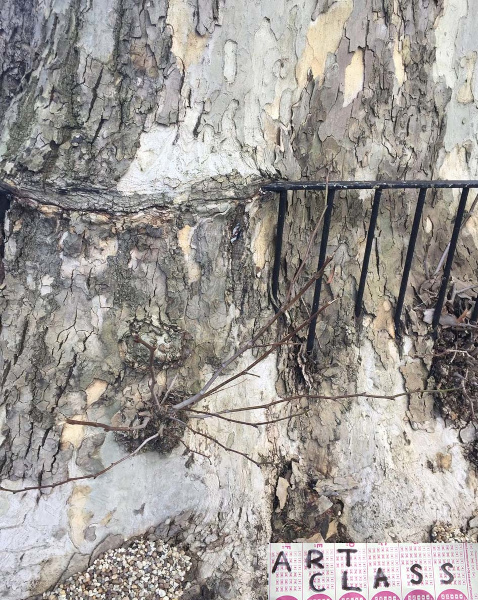
How much of oneself are we asked to bring to the table, are we asked to disclose for the benefit of others, who may remain restfully in structures that have offered them a privileged welcome? Writer, curator and artist Morgan Quaintance terms this "marginal melancholy" (2021).
To bring this subtext into the context, I made Art Class (2020, 49 mins), exploring the perennial tension between the two key words in its title. The film speaks to the limits of access that working-class artists have to cultural production and to the relevant institutions circulating these outcomes. Art Class favours wit over weaponising and reflection over rhetoric but does not pull its punches when it comes to the real obstructions to working class creative progress, or to the strategies necessary to overcome such outmoded hindrances.
Art Class premiered at the 2020 Film London Jarman Award. All of us shortlisted shared the award as a means to resist this kind of reduction of our practices to hierarchies of externalised value.
B
Burden of the Tongue
I grew up on a large council estate in Munich, in one of the increasingly popular 'Entlastungsstädten'2. I lived in the 18-storey Wohnring3. My block was the orange one.
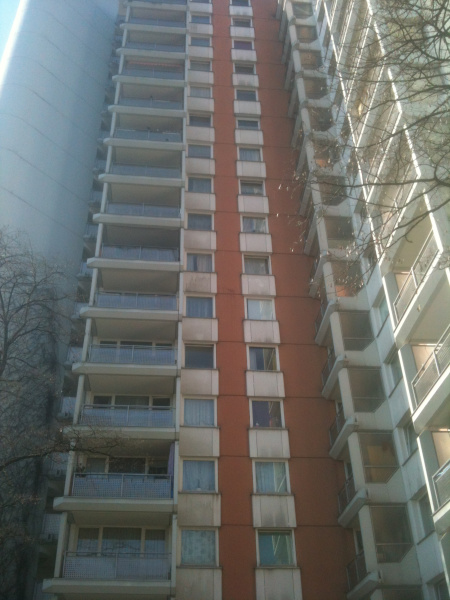
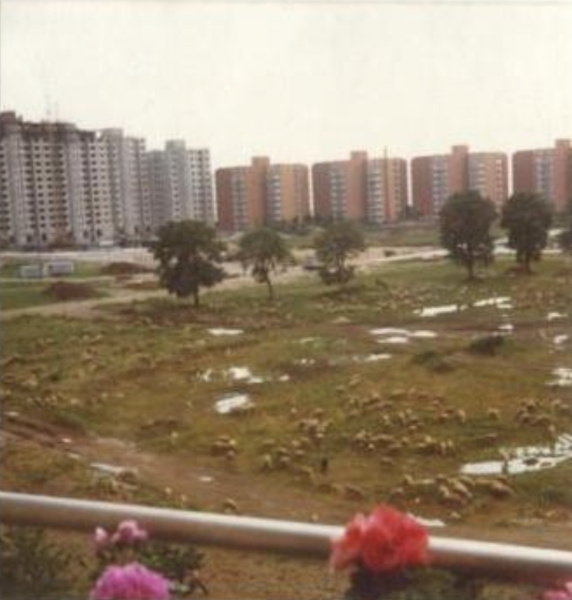
Even now, opening a tin of dog food flashes a smell-memory back to the only meal I had cooked for me as a child: spam with rice and tinned mushrooms. Only when I arrived in London did I learn that mushrooms can be eaten raw. I know this sounds unusual, but such was the reality of my growing up, amongst people who boiled everything for hours, and fed salad to rabbits.
Being an immigrant, people cannot identify my class from how I speak. In the UK, language is groomed by public schools, which, by a perverse language turn, are private.
C
Collaboration
My first collective was Vision Machine Film Project4 (1999-2010). We explored how to make films as a practice of self-(re)imagining. In the early 2000s we offered a free film school for local people in the East End of London, and worked in the United States and Indonesia to track the aftermath of state-sanctioned violence.
Our collaboration, as many that work through something together, was also troubled in many real, vivid ways. I come from a place where I had to source nourishment in unexpected places and knew where to look for it and was suddenly working with people who were fully economically enabled. To learn to see that in each other, to acknowledge and even understand the structural aspects instead of thinking of one's lack or unexamined, paralysing privilege, showed me how we need to make space for difference in ways that will never be easy, but always necessary, and to make space inside oneself for what one does not know and may never know, but still to know it is real.
D
Dogs
"A mistake, King, is feared more than an enemy. There is no such thing as a defeated mistake. Mistakes either exist or they don't. And if they do, they have to be covered over. And we are their mistake, King, never forget that".
– John Berger (1999)
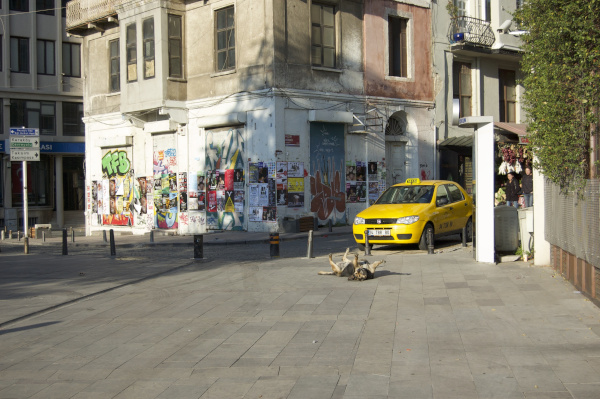
Jeff refused to leave his flat and his two little dogs because the public retirement homes wouldn't – and won't – allow pets. He was known to be a thrifty East End gangster, teaching me about bricks – which ones are easy to chisel out and make a hole big enough to climb though. Once I came home from work and every other person on the estate was wearing similar leather jackets. A van had been 'opened'. He believed in redistribution. He would pay other people's electricity bills, and always asked if I needed anything. I met him when he was already struggling to walk. He was always in pain. We spent countless hours talking and became friends, filming for many years.
I walk into my local park with my dog, Ella. Somebody picks up their small boutique dog. "Did you pick up your dog because of mine?" "Yes, because my dog cost £3000". In our neighbourhood, but in particular on our now rebuilt estate, we can see the changes made by gentrification most acutely not by the changes in cars or clothes or hairstyles. It is the dogs that mark the change more than anything. Generally, what was once the majority canine population (Staffies or variously shaped crossbreeds) has now been replaced by almost exclusively smaller dogs, and pedigrees (Dachshunds, Frenchies, Iggys, numerous kinds of poodle-doodle, etc.). Being practical, even generous, one could say that this is because it is easier to have a smaller dog when one lives in a flat, but...
...I know that a dog's 'reputation' does not necessarily match the dog's temperament. In fact, dogs are often used to discriminate against a certain kind of person. Sometimes the owners of the smaller breeds speak to me, or to my neighbours with dogs similar to mine, and find out that we are writers, or filmmakers or whatever is 'acceptable', that they did not expect, and they start visibly to relax. And then they have no problem telling me this, even.
I always thought of urban animals as witnesses in the face of power – the power we grant them, and how we appropriate them. Hope, here, is always the process of finding beauty, especially in those places deemed ugly, pathetic and insignificant. It is a being with and in the world, beyond the only human, and knowingly entangled. This I explored in Taşkafa, Bi̇r Sokak Hi̇kâyesi̇ / Taşkafa, Stories of the Street (66 minutes, 2013).
E
Estate
Estate, a Reverie (83 minutes, 2015) was made over seven years.
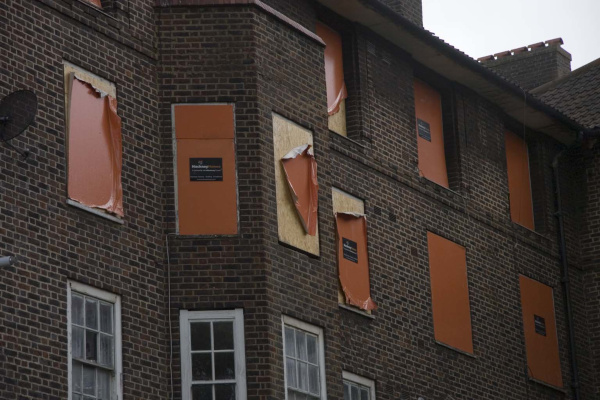
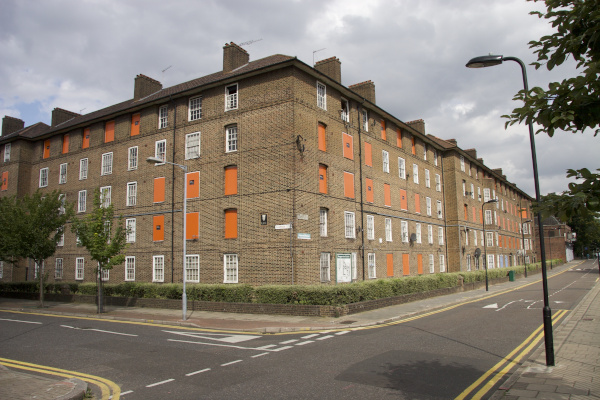
I moved into the estate (in Haggerston, Hackney, London) and into a hard-to-let flat5 in 1997. Windowpanes cracked, ceiling leaks, mould growing all over. Having not had a secure and enduring place to live in most of my life, this flat meant so much.
I joined the campaign to get the estate repaired. In 2008, Hackney Council placed orange boards over the windows of all the flats they had emptied months before. Council workers poured cement down all pipes, smashed up what remained, rendering impossible a future use.
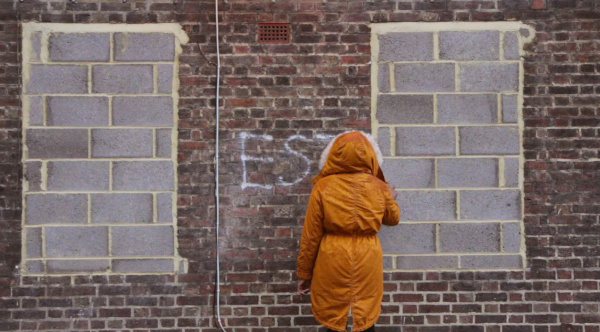
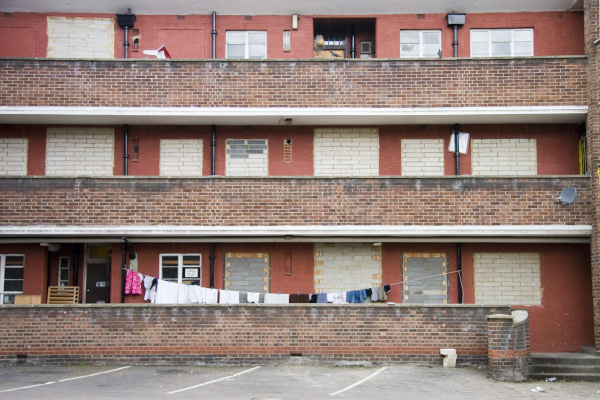
Immediately the estate became an object of judgmental curiosity – and fly tipping meant several hundred tyres blocking the estate entrance.
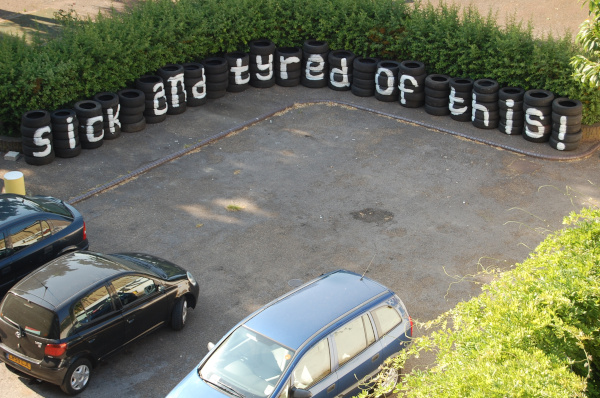
We asked passers-by if they would consider living in this place:
Meanwhile, this created a sense of continuous suspension, never really knowing whether we would receive repairs, how long we would remain, or if the estate would be demolished.
Many questions arose – a shift in perception and the nature of structures to policy – would this have happened in a middle-class neighbourhood? Why were we suddenly equated as failed people rather than as residents who lived in a failed system? The abjectness of the building now became a warning to others about us – a contagious effect where people became so afraid of entering the estate that virtually all deliveries stopped. The financial crash of 2007/8 coincided with this. All over our neighbourhood posters loomed of sinister looking persons pointing fingers at passers-by: 'Benefit Fraud'. Responsibility for the financial turmoil became a blaming the poorest and most affected. We became strangers in our own time and place.
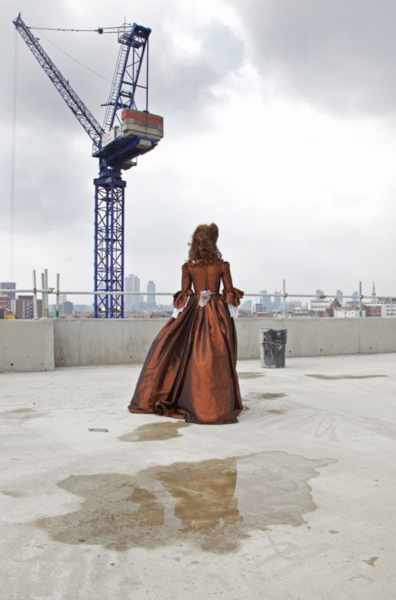
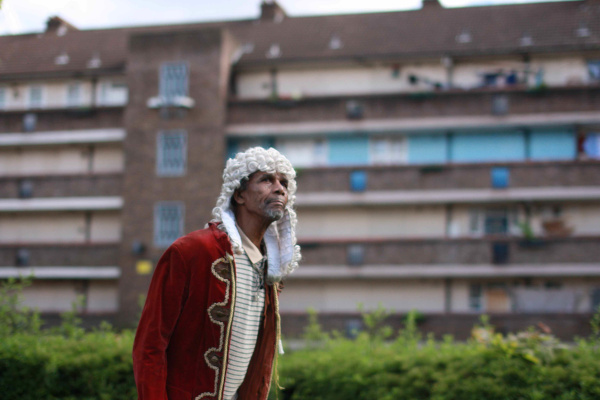
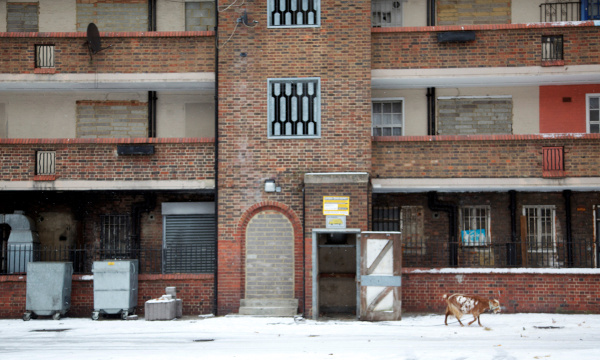
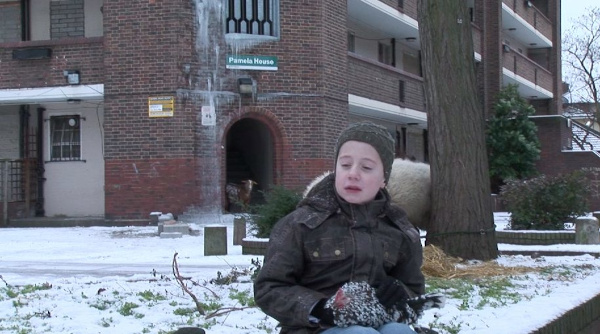
I started filming in order to understand this sense of being 'out of time', when the decision was confirmed to demolish the estate, and our campaign had not been able to save the buildings, our home.
Estate is, inevitably, about housing, and about the policies that lead us to live lives at the mercy of governmental and financialised capital decisions. But, much more, I hope, it concerns how we belong (or not) in the world and what structures of meaning exist to define personal and social lives. How can we express the fullest possibility of our being? And how might we find joy in this resistance.
The place simply didn't conform to the processes of gentrification. Estate, a Reverie is advocating for and towards lives more fluid than finance and power and property want to allow. This possibility was formed by the shared time of living in an environment confirmed for erasure. The film became a counter memory, inserting itself into a visuality that is mostly absent in mainstream discourse.
F
Feeling
Film language is a tool
of evocation
feeling
and violence
Aiming a camera scope
with the pistol grip
I shot
They shot
Shot (n)
Shooting
I have you in sight
With insight or not
Yet you are not in sight
In ways that I can
Touch
Target
They target
You
Targeted
I shoot
But when I shoot it does
Not arrive
As a maiming wound
In the knee
In the spine
Images maim differently
Words maim differently
This is important
Words are different even when
They are the same
They hit you
They hit you
They silence
They silence
They erase
They erase
They violate
They violate
They slice
They cut
They resist
They resist
They are
A shadow
And light
(Gareth Evans, 2022)
To try to de-militarise and de-financialise the language (English), to try to remove from it all those words that demean and defile the ordinary, the non-human, the more-than-human.
To try it for a while, and realise the lack, of all the words that should exist, to make the world anew.
G
Grounding
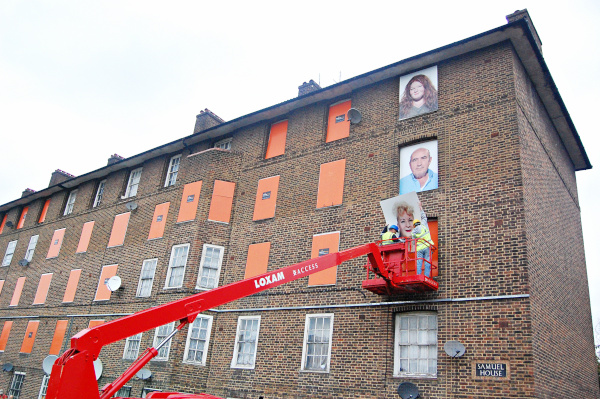
In 2008, our estate was covered up with orange boards, reminding me of my childhood in the 'orange block'. It was a realisation that no matter how organised a community we were, to resist this gentrifying process, this could not have been foreseen. By the time we had recourse to make a complaint it was too late. Told these boards prevented squatters from getting into the building made no sense, as what squatter would climb up four floors on the balcony-absent facade of a building and risk their lives to squat in a flat that is bricked up on the other side and smashed to pieces within?
Everyone hated these orange boards and we needed to intervene directly on them.
One of the 'decanted'6 flats was used for a security dog – barking-its-head-off lonely – attached to dog wardens patrolling the estate as one of several ill-fated security measures put in place by the housing association. We used this flat as a studio.
Needing 67 portraits, we said we will stop when 67 are done. This first weekend, our neighbours returned with more neighbours, and food, and so on, and we put tables outside, and more people started to gather, and so this was the weekend where we started and finished the photographing.
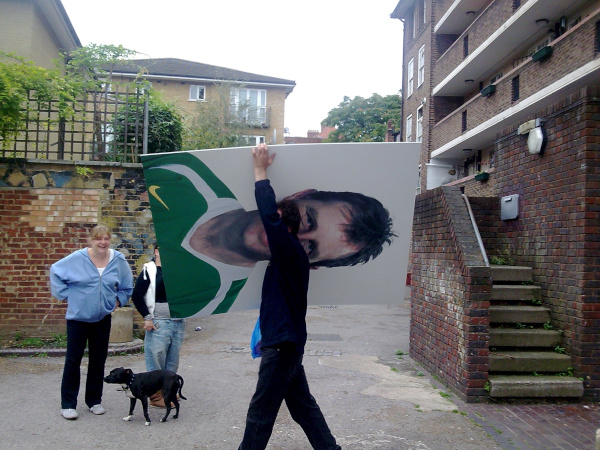
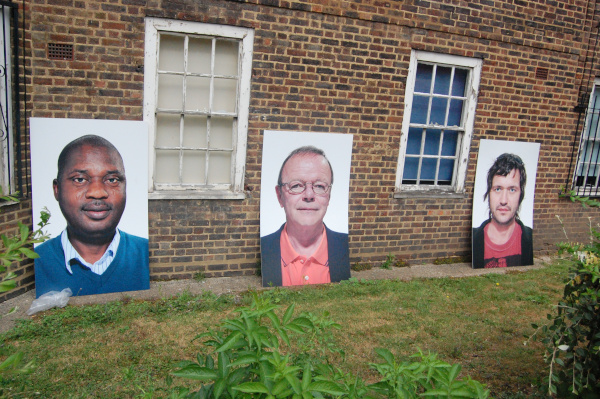
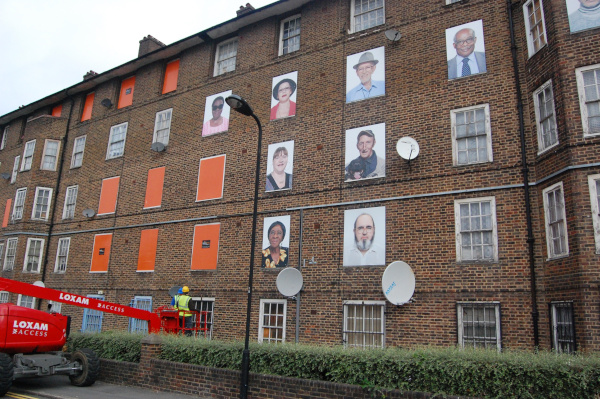
When we installed i am here (2009-2014) – we had the first of many community parties inside the estate, encouraging people to encounter estates as places of life, resisting the mainstream image of abjection.
H
High Production Values
I am struck by the ongoing internationalisation of aesthetics in film festivals, resulting in many lively discussions on the need to fail, to refuse standardised forms of meaning-making, to work with an imperfect form. Films now look the same regardless of where they are made, because the funding demands, market and technical requirements, modes of making and theories behind structure / definition / intention / commercial potential (whether mainstream or arthouse) are the same, aligning with what filmmaker and theorist Peter Watkins some decades earlier, in relation to television – and especially the news – termed the 'monoform'.
In 1985, in an interview for the BBC's arts series Arena, writer Jean Genet said, "I enjoyed making a clumsy kind of theatre. And by being clumsy, perhaps there was something new about it."
In filmmaking, clumsiness is often seen as undesired or something to be instantly overcome. Filmmaker and curator Therese Henningsen and I started thinking about how clumsiness may instead be seen as an integral part of one's working process, both in the encounter with the person(s) filmed as well as in the form a film may take. What if clumsiness becomes central to a methodology where the preconceived and the unexpected intersect. How might an emphasis on hesitation, awkwardness and not knowing present both possibilities and challenges: ethically, relationally, formally, and in terms of production structures?
I
Incomplete
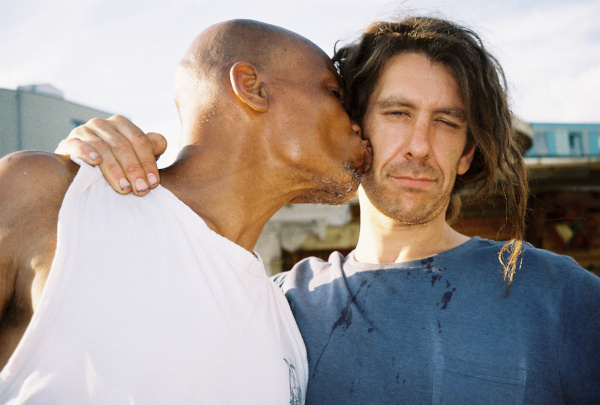
Filmmaking to me is not confessional but shared and contested, troubled and alive. Sometimes stories, even poetic or lyrical ones, need context and sometimes they don't. I am drawn to bodies that can show us what they carry; words are often not enough. And sometimes images too are not enough to reveal a feeling: some things cannot be shown.
We can lean on others but not so much as to make them tumble over. Similarly, when someone leans on us, we need to take care not to let them tumble when we step aside. Of course, at times in intimate relations and friendships this kind of over-leaning may be necessary, and possible. Sometimes it becomes important that we hear our stories told by someone else, as this might allow us to take the space, too. This is how I learned to speak, in such a space of attention, and courage, a process I learned from Forum Theatre7, and especially from the rehearsals during the making of Here for Life (2019).
J
Journey
In 20138 and again 20239 this disquiet led to my manifestos/ journey prompts about how to resist the temptation of aligning one's work to such internationalisation, and to explore the deep values behind ones making, anew each time. You are welcome to look at mine, but I would be excited to find yours.
K
Knowing
Provoking language or eclipsing it, an image can determine not only what we know and feel but also what we believe is worth knowing about what we feel.
– Toni Morrison (1998)
In And Our Faces, My Heart, Brief as Photos (1984), writer and storyteller John Berger wrote: "There is no word in any traditional European language which does not either denigrate or patronise the urban poor in its naming. That is power."
L
Listening
Project: Sounding the Voices
M
Militarism
How can filmmaking be a creative act of resistance when history becomes a pool of secretion? Since I have written about this extensively in Secreting History in 21 Takes (2018) you are welcome to download the pdf of that text.
*The word 'secrete' has two senses that appear to be in peculiar tension with one another: to exude, and to make secret. It is this peculiar tension that informs the relationship between spectacular representations of covert military operations in cinema and the spectral violence of the actual 'theatres of operation'.
N
Nomadic Gardens
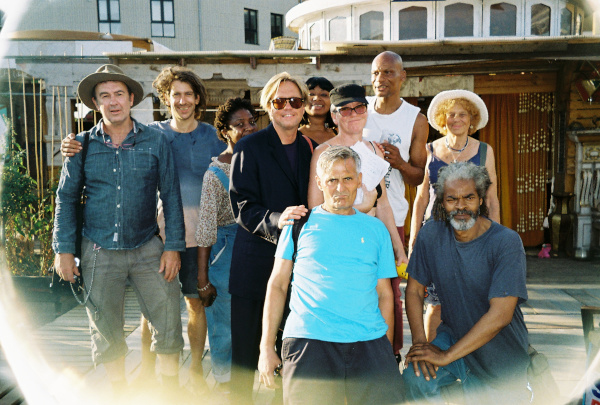
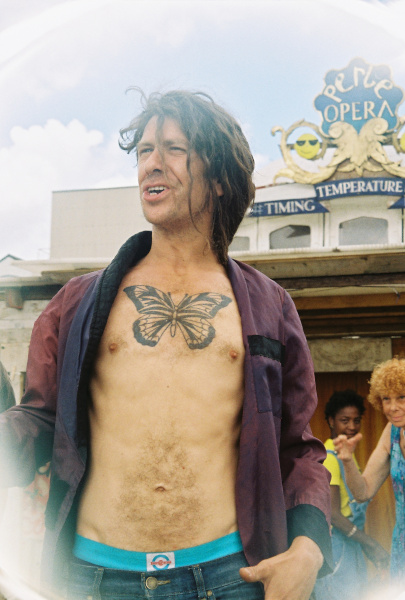
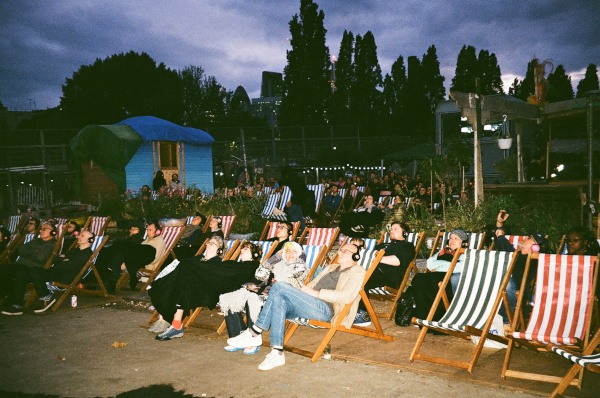
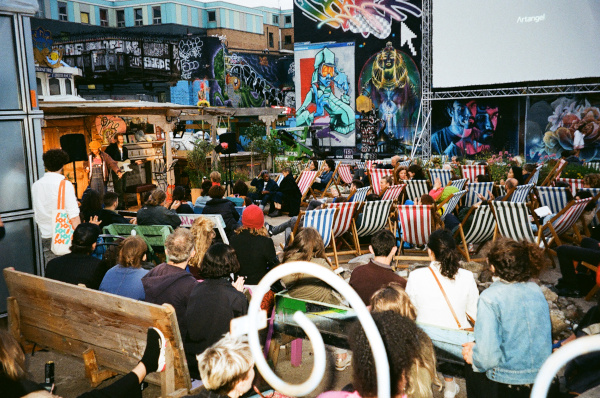
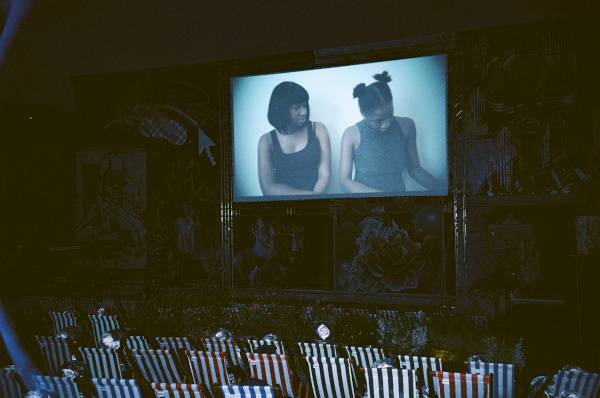
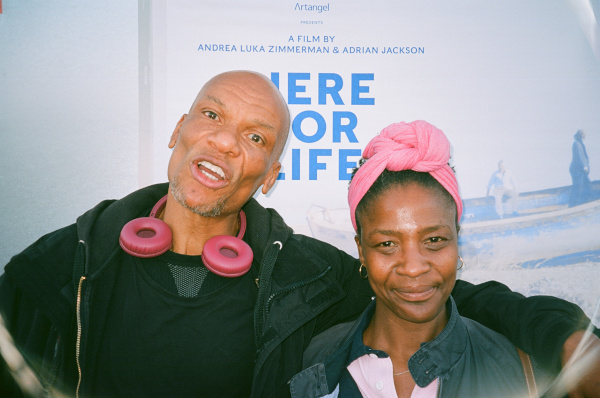
I not only resist but challenge the conventional differentiation between documentary and fiction. I thought of Here for Life as a fiction, but festivals and the media turned it into a documentary. This itself shows the expectations and pressures of form on content, and how this way of making fiction from life confuses the film industry.
If we seek new futures, there is a need to tell stories in ways that refuse crude categorisation. In almost every realm we encounter binary positions. The pretence persists that we can all do well if we only try hard enough – but such an argument ignores the structural inequalities within which we live. Nomadic Gardens, a self-organised community project, all buildings built by those using them, makeshift and where everyone was welcome and, where most of Here for Life is set, for many years resisted erasure, until it was finally flattened in 2021, for the land was simply 'too valuable'.
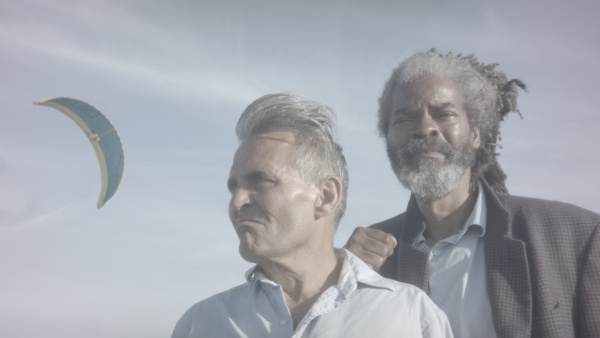
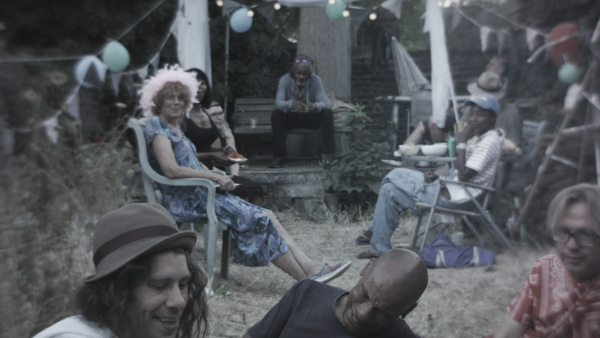
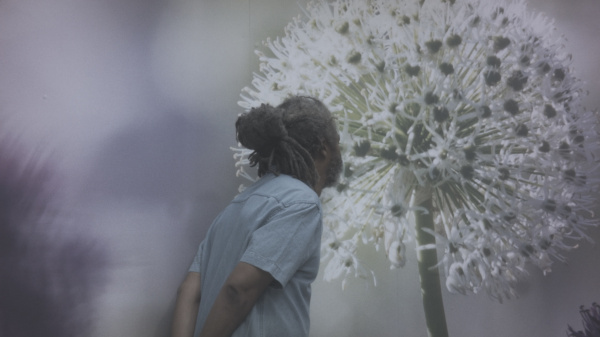
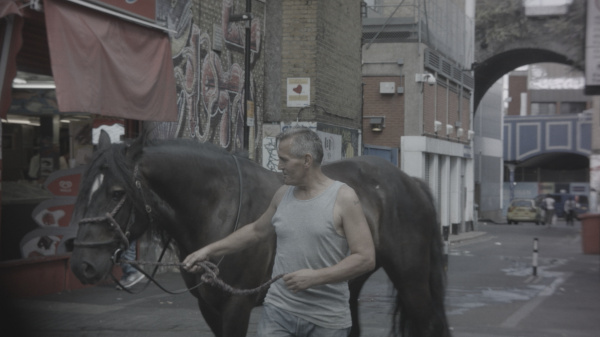
Resistance is developing a language for tenderness and attachment beyond the social norms that limit love.
Project: Here For Life
O
Open
Attention is the rarest and purest form of generosity.
– Simone Weil (1952)
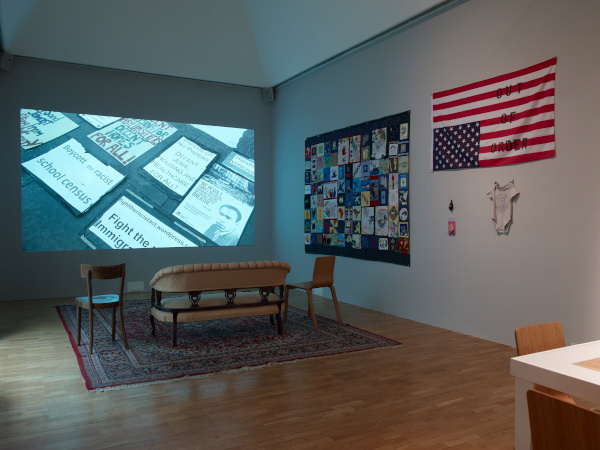
When and how do we encounter each other, what are the conditions of this encounter, and what conversations may emerge?
For my participation in the Whitechapel Gallery's London Open in 2018 I wanted to not only show my own work, but extend the work into a living context, where the past and present of imagining 'otherwise' necessitates being in conversation with others. The refusal to be singled out, but be seen in contexts that are alive, challenging, and space making.
My film Civil Rites was projected on the wall, with a comfortable seating area. The rest of the room held a game, encouraging people to interact with each other, a book and reading area, a notice board and exhibition of protest posters and ephemera sourced from individuals and local radical archives.
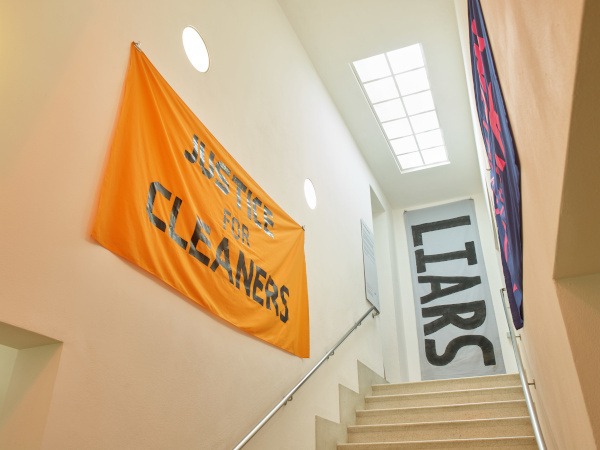
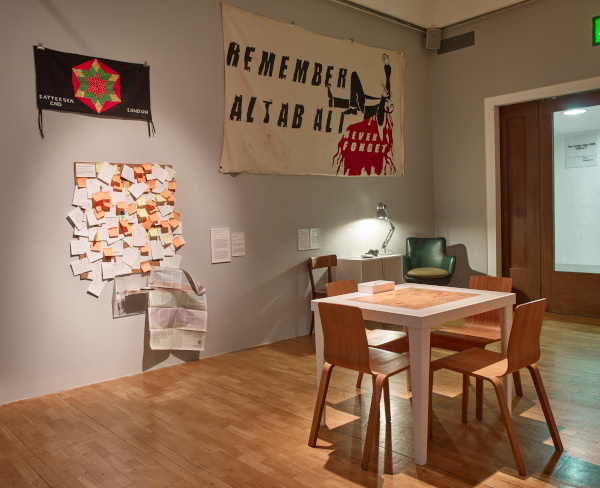
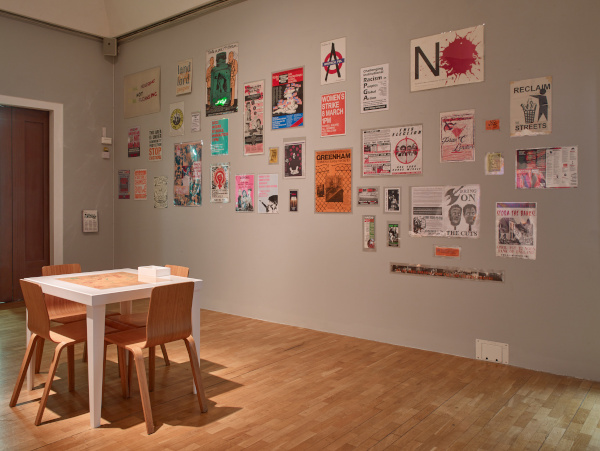
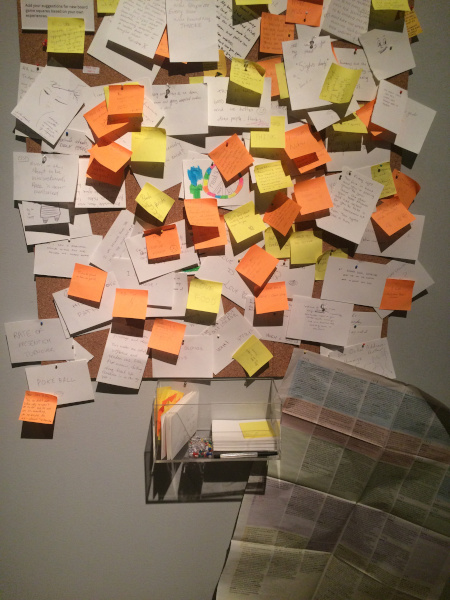
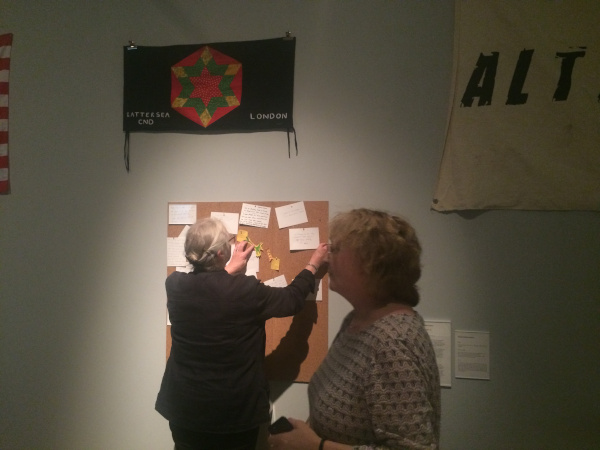
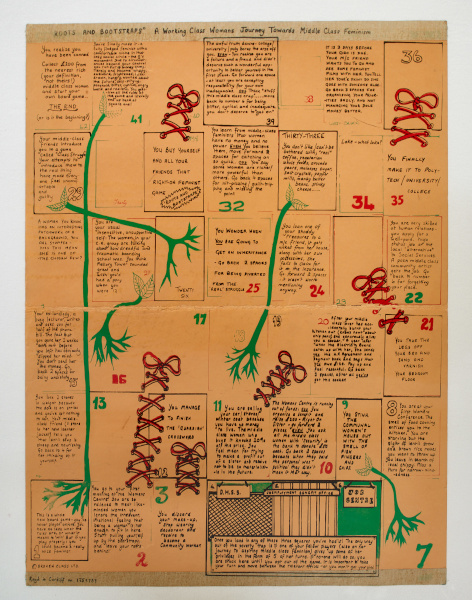
Project: Civil Rites
P
Public Space
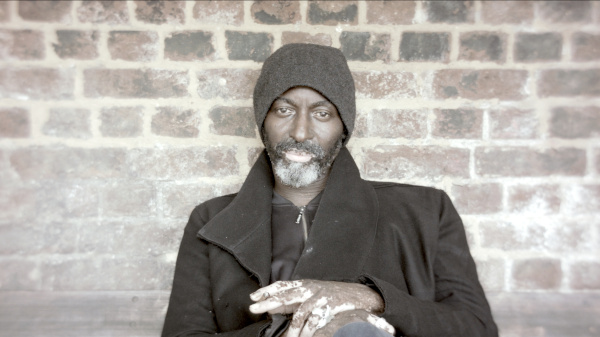
To 'shelter-in-place' is a military order and implemented during times of emergency. For example, it would be an instruction to remain within the building one already occupies, rather than evacuating the area or seeking a community emergency shelter. What then to do when one is unhoused?
I am drawn in my making to lives lived at the edges, even if – and perhaps especially when – those lives are first glimpsed at the 'centre' of things, often in the public eye, visible but not seen. This work can only exist because we have public parks. I met William, who was living in my local park, because he had to, and because he could. To resist the temptation of easily accessible narratives imposed by passers-by, government agencies and the mass media, we made a work about (im)possibility as we started documenting his time in the park. Over many months, a community slowly formed around him. We were exploring whether public spaces really are for all, and how a falling out of the structures that exist – often ramshackle and excluding – makes another form of survival necessary.
Together, we made Shelter in Place (3 screens, 19 minutes, 2021). William created the sound design.
Project: Shelter in Place
Q
Questions
A space for yours.
R
Risk
Shared risk and solidarity are not empathy.
Care as shared risk demands a material reality, a showing up.
– Christina Sharpe (2019)
S
Schwitters
I think a lot about how people come to believe their way of life is naturally superior, profoundly based on the impossibility of another life, justifying extreme forms of violence. This ranges from the security industrial complex to the everyday. My dear friend, a queer woman who lived in Hackney for more than 50 years, rescued a parakeet, which I borrowed for a scene in Estate, a Reverie.
This creature co-habits alongside several cats, two budgies and a big dog. My friend lives in a ground floor council flat, adapted for her particular health needs and, each year, when the sun shines, she takes her birds out, to sit with them in her small garden. On the other side of the road is a brand-new luxury apartment block, occupied by mostly young 'professionals'. The corner of that block faces my friend's place. Lockdown happened. The occupiers of three floors of the luxury block complain about the chirping of the bird. They say it disturbs them being able to work from home. They cannot concentrate. They do this by calling the council. They collect evidence by entering my friend's garden without her permission and photographing the parakeet who is sunbathing with her. My friend is hard of walking and so by the time she got up the intruder had left. Worried, my friend went to speak to all her own neighbours and asked if the bird disturbed them too. "What bird?" said the first. "It makes me happy when it chats away," replied another. "I love birds" said a third. Then a letter from the council arrived, preventing her from taking her bird out again for fear of losing her tenancy.
Kurt Schwitters, in between the two world wars, after having had to flee Germany, being interned along the route to the UK, and separated from his son, wrote a series of absurd fables, for adults, called Lucky Hans and other Merz Fairytales (2009). Merzschmerz (4 shorts, 1-8 minutes, 2014) is a series of short videos in which children retell several of these tales, from memory to an adult neighbor or friend.
A fairy tale for adults is also a moral warning, given the conditions of our way of (mass media) life, with politicians altering reality to suit their propagandist, promotional itinerary, The worlds these tales describe is the one that was made as a warning – against the pretence of language, of morals, of political jargon as masking unbelievable suffering. In The Good Man, to 'be good' means you will die, so better not be too good! Be selfish and all is better... The children insert themselves into this world view and reflect the absurdity back to the adults that they inherit the world from.
Project: Merzschmerz
T
Touch
Contagion10, the writer and scholar Caterina Albano writes, is 'to touch with' (2023). To touch with is how I hear myself describing my process of working: to open oneself to that possibility of working into a disturbance, and into a different way of knowing with. And this knowing is a process whose edges are never predictable.
U
Under the Influence
Sometimes I like to say that I am a filmmaker, because people think it's glamorous, but then to explain what kind of film it is that I am making, or what I am seeking, gets complicated, and so occasionally I just sit with the glamorous part and enjoy what it conjures.
V
Vernacular
A schema such as that which produces the very conditions of our undoing, socially and economically. We know that there is no one story, so why insist on one form to tell them all?
W
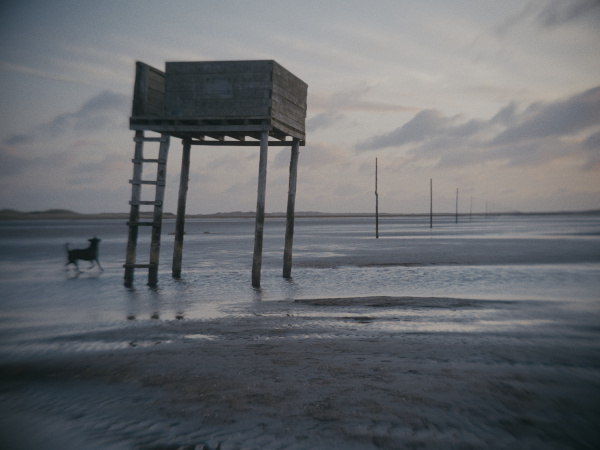
I think the world is dying because we were dead to its astonishments pretty much. It'll be around but it will become less and less until it's finally compatible with our feelings for it.
– Joy Williams (2021)
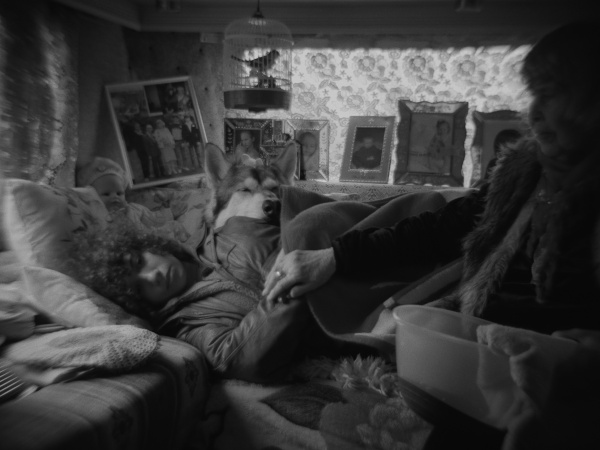
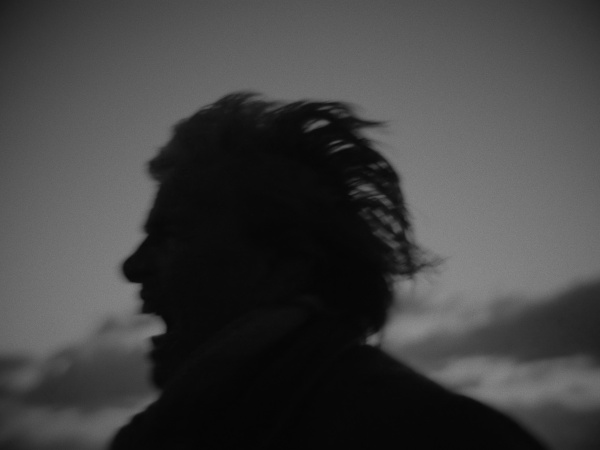
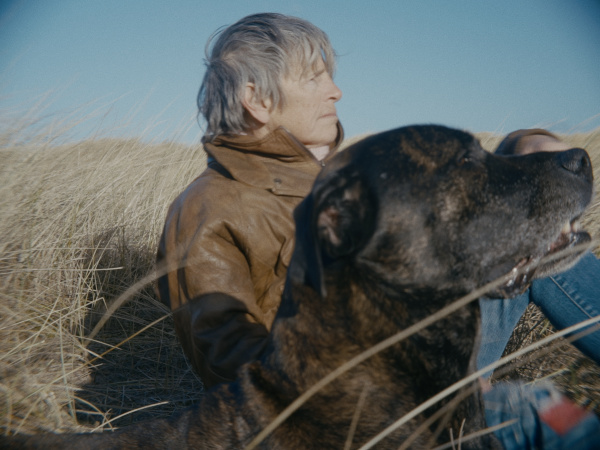
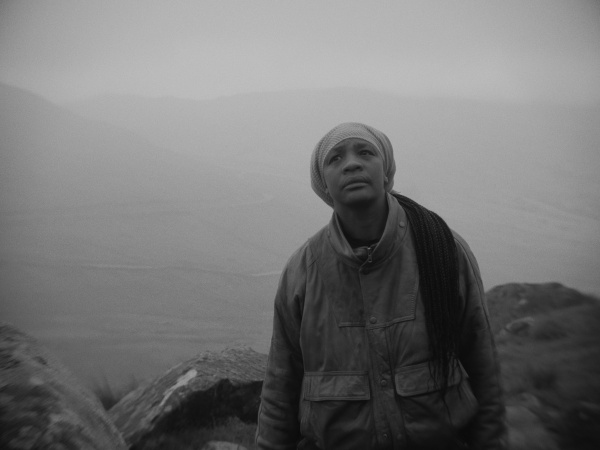
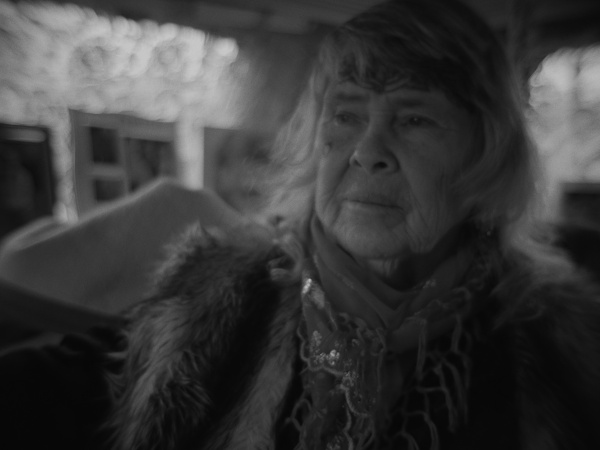
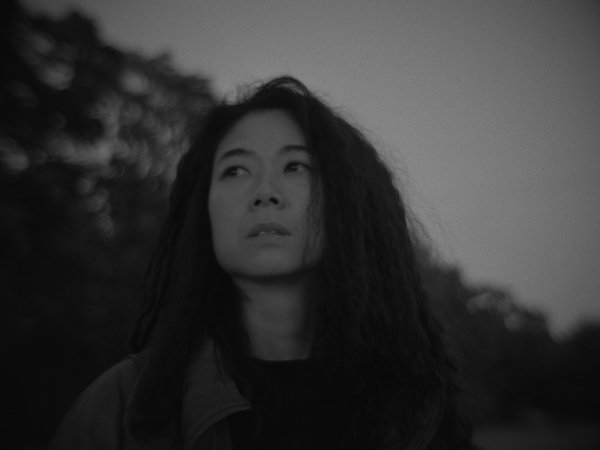
My forthcoming film Wayfaring Stranger (2024), charts the life of an itinerant character, embodied by seven performers – women and non-binary – across seven days representing seven decades. Running from the city, through post-industrial edge lands and manicured enclaves, they find themselves in forests, farms, mountains and finally at the shore. Along the way, which lasts a lifetime, they undergo a transformation, through the seasons and changing geography, both physically and emotionally, from youth to elderhood, and from a single, alienated being into an accepted element of the wider world. Their personal narrative co-exists with the past, present and future of the land they traverse. Each 'day' is a 'station' that signifies a turning point in her emotional development: from escape, through loss, grief, and waywardness, to solidarity and co-existence.
Part fable, part manifesto, part poem, part documentary, filmed across landscapes marked by centuries of ceaseless human extraction, Wayfaring Stranger proposes a possibility for living in kinship with the human and the non-human, for repair and convalescence, for a future in co-existence. The film asks what it takes to find a liveable life on one's own terms and without conflict with others and the environment.
Project: Wayfaring Stranger
X
A language is like the shadow our own body casts in the sun.
It moves along with us, even when we are running somewhere else.
– Xiaolu Guo (2022)
Y
Why would we want to close the distance when we can close the gate?– Toni Morrison (1998)
Z
Andrea Luka
Zimmerman is a Jarman Award-winning artist, filmmaker and cultural activist whose multi-layered practice calls for a profound reimagining of the relationship between people, place and ecology.
Works cited
Audio
G-would you want to live here_audio (Zimmerman, Johansson, 2009)
Books / journals
Berger, John. 1999. King: a street story, New York: Pantheon Books.
Fugitive Images. 2010. Estate: Art, Politics and Social Housing in Britain, London: Myrdle Court Press.
Fisher, Mark. 2009. Capitalist Realism: Is There No Alternative?, Winchester: Zero books.
Guo, Xiaolu. 2022. "The Mystery of Language." In Strangers Within: Documentary as Encounter, edited by Therese Henningsen and Juliette Joffe, London: Prototype.
Morrison, Toni, 2022. "Strangers." In Strangers Within: Documentary as Encounter, edited by Therese Henningsen and Juliette Joffe, London: Prototype.
Myles, Eileen. 2020. For Now, New Haven, CT, and London: Yale University Press.
Myles, Eileen, 2022. Pathetic Literature, New York: Grove Atlantic.
Schwitters, Kurt, 2009. Lucky Hans and other Merz Fairytales, Princeton: Princeton University Press.
Weil, Simone, 1952. Gravity and Grace, New York: G.P. Putnam's Sons.
Williams, Joy, 2021. Harrow, Waterville, Maine: Thorndike Press.
Quaintance, Morgan, 2021. "Closed Loop", Art Monthly 452: Dec-Jan 21-22
Exhibitions
i am here, London (2009-2014)
Common Ground, Spike Island, Bristol (2017)
Real Estates, Peer Gallery, in association with LUX, London (2017)
London Open, Whitechapel Gallery, London (2018)
Films
Art Class (Zimmerman, 2020, 49mins)
Civil Rites (Zimmerman, 2017/8, 27mins)
Estate, a Reverie (Zimmerman, 2015, 83mins)
Erase and Forget (Zimmerman, 2017, 86mins)
Merzschmerz (Zimmerman, 2014, 4 shorts, 1-8 mins)
Here for Life (Zimmerman, Jackson, 2019, 87mins)
Shelter in Place (Zimmerman, Fontaine, 2021, 3 screens, 19mins)
Taşkafa, Bi̇r Sokak Hi̇kâyesi̇ / Taşkafa, Stories of the Street (Zimmerman, 2013, 66mins)
Wayfaring Stranger (Zimmerman, 2023)
Here for Life is available on VOD via Modern Films
Merzschmerz via Film and Video Umbrella
All other films are available via LUX.
Film trailers
Taskafa, stories of the street
Wayfaring Stranger
Images
ART CLASS_accordeon (Art Class film still, 2020)
A-ARTCLASSPOSTER (ibid)
A-ArtClasstreefence (ibid)
A-Z (Zimmerman, 2022)
B-Neuperlach-sheep (author unknown, sent to me by a friend in 2017)
B-Neuperlachwohnring (author unknown, sent to me by a friend in 2017)
D-Taskafa (Taskafa film still, 2011)
E-brickedupinside (Fugitive Images, 2010)
E-ESTATEClarissaweb_BCampbell (Briony Campbell, 2014)
E-ESTATEEricwig (Fugitive Images, 2012)
E-ESTATE_graffity (Estate, a Reverie film still, 2015)
E-Estate-cast_BC (Briony Campbell, 2013)
E-ESTATE-goat (Estate, a Reverie film still, 2015)
E-ESTATE-kidandchicken (ibid)
E-orangeboardspeeling (Fugitive Images, 2009)
E-OrangeboardsTFennell (Tristan Fennell, 2009)
E-TyresRMarie (Ruth-Marie Tunkara 2010)
G-iamhere (Fugitive Images, 2009)
G-iamhere1 (ibid)
G-iamhere2 (ibid)
G-iamhere3 (ibid)
G-iamhere4 (ibid)
I-HereforLife-TH (Therese Henningsen 2018)
N-Artangel_HereforLife (Here for Life, film still, 2019)
N-Artangel_HereforLife1 (ibid)
N-Artangel_HereforLife3 (ibid)
N-HereforLifehorsemarket (ibid)
N-HereforLifeTHenningsen (Therese Henningsen 2018)
N-HereforLifeTHenningsen1 (ibid)
N-HereforLifeTHenningsen2 (ibid)
N-HereforLifeThenningsen3 (ibid)
N-HereforLifeThenningsen4 (ibid)
N-HereforLifeTHenningsen5 (ibid)
O-CIVILRITESNEWGAME (London Open, Civil Rites, Zimmerman, 2018)
O-CIVILRITESnoticeboard (ibid)
O-CIVILRITESWG (London Open, Civil Rites, Courtesy Whitechapel Gallery, Stephen White, 2018)
O-CIVILRITESWG2 (ibid)
O-CIVILRITESWG3 (ibid)
O-CIVILRITESWG4 (ibid)
O-RootsBootrapsJCPGWG (ibid)
P-Shelter (film still, 2021)
R-DR_PEER1 (Real Estates, David Roberts, 2015)
R-DR_PEER2 (ibid)
W-WS (Wayfaring Stranger, film still, 2022)
W-WS1TizzieEirini (ibid)
W-WS2Eileen (ibid)
W-WS3Eileen (ibid)
W-WS4Mwiinga (ibid)
W-WS5-Tizzy-Rose (ibid)
W-WS6Michiko (ibid)
Public Lectures
Diaz, Natalie, The Alchemy Lecture: Borders, Human Itineraries and All Our Relation
Date: November 10, 2022, 6-9pm 48:25 – 1:00:48 (accessed 6.4.2023)
"To shape while being shaped"
"Be of consequence to one another"
Sharpe, Christina, Forum of the Future, Porto, November 6, 2019
Links
H (accessed 6.4.2023)
L (accessed 6.4.2023)
M - Secreting History in 21 Takes (accessed 6.4.2023)
W (accessed 6.4.2023)
ENDS
06.04.2023
Footnotes
- For poet and writer Natalie Diaz, "to be 'of consequence' is another way to think about relationality, a word often used as a shorthand which erases the labor required to enact it". (2022) ↩
- Meaning 'unloading' or 'relief' cities, where immigrants mainly were housed ↩
- Living-ring ↩
- Vision Machine was Christine Cynn, Joshua Oppenheimer, Michael Uwemedimo and Andrea Luka Zimmerman ↩
- Meaning that several families had turned it down as sub-standard ↩
- A term used by regeneration stakeholders, meaning people have left. ↩
- Part of the Theatre of the Oppressed, as formulated by author, theatre maker and educator, Augusto Boal ↩
- In 2021 my manifesto was repurposed by the artist Schtinter for his Important Books (or, Manifestos Read by Children) and read by an eight-year-old girl from East London (accessed 3-4-23). ↩
- https://ualresearchonline.arts.ac.uk/id/eprint/19582/ (accessed 3.4.23) ↩
- "In medical terms, contagion is negative and relates to the transmission of disease, to infection (from inficere – to put in, to stain with) as the diffusion of pathogens. It is a vocabulary heavily imbued with military metaphors that promise conflict. Even when used colloquially, as in the expression of contagious laughter, the implication is of disturbance and excess, of something that should not spread". Caterina's text explores the ways that we might "question such connotation and ask if one can conceive contagion differently: can the mingling of bodies that contagion presupposes be other than dis-ease? To subvert what to touch with can mean... ". (Albano, 2023) ↩

